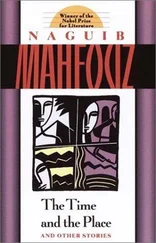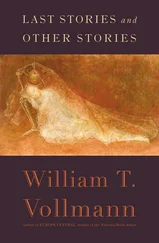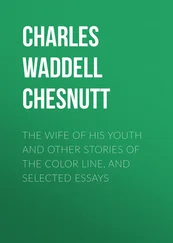Yasushi Inoue - Counterfeiter and Other Stories
Здесь есть возможность читать онлайн «Yasushi Inoue - Counterfeiter and Other Stories» весь текст электронной книги совершенно бесплатно (целиком полную версию без сокращений). В некоторых случаях можно слушать аудио, скачать через торрент в формате fb2 и присутствует краткое содержание. Год выпуска: 2000, Издательство: Tuttle Publishing, Жанр: Классическая проза, на английском языке. Описание произведения, (предисловие) а так же отзывы посетителей доступны на портале библиотеки ЛибКат.
- Название:Counterfeiter and Other Stories
- Автор:
- Издательство:Tuttle Publishing
- Жанр:
- Год:2000
- ISBN:нет данных
- Рейтинг книги:5 / 5. Голосов: 1
-
Избранное:Добавить в избранное
- Отзывы:
-
Ваша оценка:
- 100
- 1
- 2
- 3
- 4
- 5
Counterfeiter and Other Stories: краткое содержание, описание и аннотация
Предлагаем к чтению аннотацию, описание, краткое содержание или предисловие (зависит от того, что написал сам автор книги «Counterfeiter and Other Stories»). Если вы не нашли необходимую информацию о книге — напишите в комментариях, мы постараемся отыскать её.
Counterfeiter and Other Stories — читать онлайн бесплатно полную книгу (весь текст) целиком
Ниже представлен текст книги, разбитый по страницам. Система сохранения места последней прочитанной страницы, позволяет с удобством читать онлайн бесплатно книгу «Counterfeiter and Other Stories», без необходимости каждый раз заново искать на чём Вы остановились. Поставьте закладку, и сможете в любой момент перейти на страницу, на которой закончили чтение.
Интервал:
Закладка:
The tragedy of this person — discouraged, but with his small eyes still manifesting the vigor of his competitive spirit, his slender jaw and mouth alive with nervousness and jealousy, his skin speckled with the black spots that followed him to his old age, his hairline destined to recede (I had now revised my concept of Hosen's appearance in this way, but anyhow. .) — the tragedy in that long and dismal career was gradually but in a deep-rooted form already getting underway during the period from 1897 to the summer of 1899.
With this, I conclude my investigation of Hosen Hara for the present. This is because I must proceed with Keigaku's biography to the time when his masterpiece "The Happy Mountain Peak,"* his first work of that period, appeared and to an account of the vigorous activities of his middle period which fixed his position in the art world.
During those two days that I gazed fixedly at the summit of Mount Amagi without touching my pen to Keigaku's biography, the red buds of the crape myrtle at the edge of the garden had suddenly diminished and its white blossoms were in bloom. Perhaps I only imagined it, but the rising cumulus summer clouds constantly rolling upward had changed to wispy autumn clouds drifting unnoticeably away. I looked at the calendar; it was the First Day of Autumn.
Even then I remembered the Hosen Hara forgeries of Keigaku's "Flowers and Birds" and "The Fox" which had hung in the tokonoma of the two farmhouses in the mountain-ridge hamlet in the Chugoku range where the atmosphere of autumn had similarly begun to fill the air. And at that moment those same thoughts of the Eternal seized me once again. Eternity was something related to Keigaku and Hosen, and yet, ironically, Life held one small reality which was irrelevant to both Keigaku and Hosen: in that mountain hamlet originals and forgeries had no meaning. When fall came I would go to Kyoto and drink saké with Takuhiko Onuki and tell him about the aspects of Hosen which he didn't know, I thought. And at that moment, I became submerged in my thoughts which sparkled with a cold light. Footnotes
* 1868–1912: the period of the reign of Emperor Meiji.
* A section of Kyoto.
* The tokonoma has no Western counterpart. It is a long, narrow alcove or recess in a room (usually the main room of a house, but sometimes also the tea-room or master bedroom) used decoratively for displaying a prized hanging scroll. Generally, it is very simply and tastefully arranged with just the scroll and a flower arrangement or statuette. Every guest room at a Japanese inn has a tokonoma .
* In pre-modern Japanese architecture, the doma was an unfloored multi-purpose area, set lower than the rest of the house and used as a storage area, as a pantry, and as the kitchen. Separate kitchens have only recently begun to replace the doma in urban areas; in rural areas, the doma persists.
* I am informed by makers of Japanese fireworks that "chrysanthemum powder" is a technical term for a mixture of charcoal, sulphur, and potassium nitrate in proportions that will produce a chrysanthemum-shaped flare when exploded in the air.
** Seeds and chaff were used as retarding catalysts until sawdust replaced them due to regulations in some countries against the import of agricultural products.
* A euphemism for Mount Fuji.
OBASUTE
I
WHEN ON earth was it that Ifirst heard the legends about abandoning the old people on Mount Obasute?
I come from a mountain village in the central part of the Izu Peninsula. There I was educated during my childhood days. In the Toi region on the west coast of the peninsula, tales about discarding old folks in the mountains in ancient times have been handed down from generation to generation. In all likelihood, it was along with these tales that I heard the Legend of Mount Obasute, a mountain whose very name means to discard old people, and it caused my small heart to swell with sorrow.
Wasn't I about five or six at that time? On hearing that story I went out onto a porch and screamed and sobbed. I have no recollection of where that place was exactly, but what I do recall in my faint memory is that my grandmother — or was it my mother? — anyhow, a member of my family immediately came flying out to the porch and said something to me — just a few words. Of course, I could not comprehend the story itself, but the sadness of the whole idea of carrying my mother on my back and taking her up a mountain and abandoning her there became an abstraction which oozed into my heart like waterdrops dripping between rocks. I shrieked and cried, unable to endure the sorrow of being separated from my mother.
It was only after I became ten or eleven that I was able to grasp the full meaning of the story of Mount Obasute in its entirety. Occasionally I used to get picture books from an aunt of mine who lived in a small town about twenty miles away. In one of those volumes there was a tale called Obasute-Yama . Apparently all sorts of variations of the legend about abandoning old folks on Mount Obasute are in circulation with slightly altered details. But the one that I know is based entirely on that book, and it continues to hold to this day without modification. It can easily be discerned how strong an impression that picture book Obasute-Yama imprinted on my mind when I was a child. Of all the tales that I heard in my childhood, the two that I can't forget even now are the story of Ishidomaru, who went to visit his father on Mount Koya, and the Legend of Mount Obasute. Both have as their themes the anguish of separation of a parent and child.
Years later, during my university days, when I was back home on summer vacation, I fortuitously rediscovered this Obasute-Yama picture book in the cupboard of our godown, and I looked it over again. Only the frontispiece was in color; the illustrations on several other pages were in black-and-white relief; and the Legend of Obasute was written in a literary style that might be considered a little too difficult for children.
In ancient times in the Province of Shinano there was a feudal lord who hated old people. So he decreed throughout the land that when old people became seventy years of age, they were, without exception, to be taken to the mountains and left there. One bright moonlit night a young farmer climbed up a mountain carrying his mother on his back. Since his mother had reached the age of seventy, he had to discard her there. However, the young man could not bear the thought of leaving her there — no matter what! He brought her back home again, dug a hole under the floor so no one would see her, and hid her there. About this time, an envoy from a neighboring province appeared before the feudal lord and laid down a very difficult proposal. He posed three problems, and if these were not solved, the Province of Shinano would be attacked and destroyed. The three problems were: to make a rope out of ashes; to pass a thread through a nine-sided jewel; and to make a drum beat by itself. The feudal lord was perplexed, and he issued a proclamation throughout the land calling upon the wise men to solve these difficult problems. When the young farmer told this to his mother, who was hidden under the floor, the mother instantly explained to him how the problems could be solved. The young farmer immediately went to the home of the feudal lord and told him. Because of this the province was able to be saved from its difficulties. On learning from the young man that all this was due to the wisdom of an old woman, the feudal lord became enlightened and understood that old people should be respected, and without any further hesitation he proceeded to abolish the decree.
So went the story.
Читать дальшеИнтервал:
Закладка:
Похожие книги на «Counterfeiter and Other Stories»
Представляем Вашему вниманию похожие книги на «Counterfeiter and Other Stories» списком для выбора. Мы отобрали схожую по названию и смыслу литературу в надежде предоставить читателям больше вариантов отыскать новые, интересные, ещё непрочитанные произведения.
Обсуждение, отзывы о книге «Counterfeiter and Other Stories» и просто собственные мнения читателей. Оставьте ваши комментарии, напишите, что Вы думаете о произведении, его смысле или главных героях. Укажите что конкретно понравилось, а что нет, и почему Вы так считаете.












